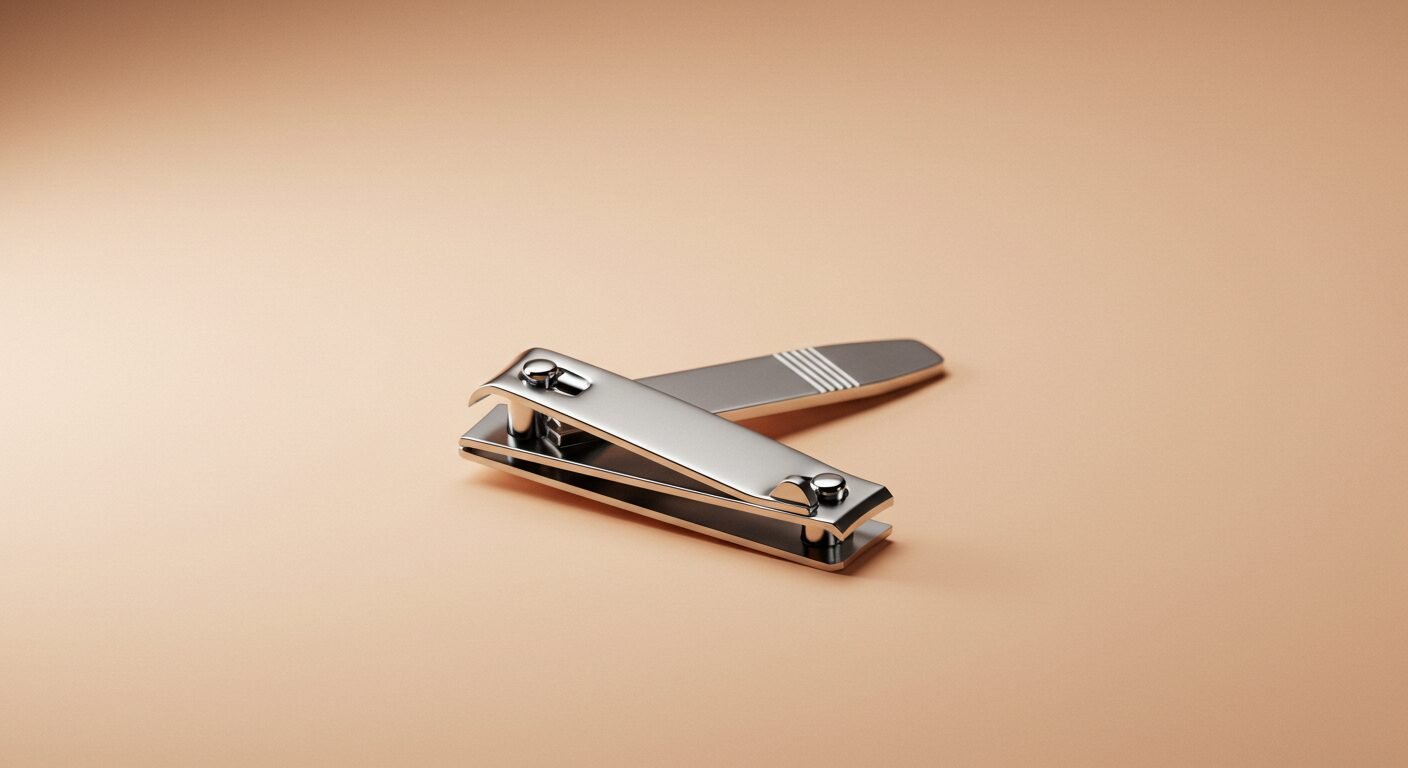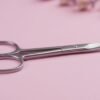Are you struggling to find the perfect nail clippers that deliver clean, precise cuts without causing splits, tears, or discomfort? You’re not alone! Choosing the right nail cutting tools is essential for maintaining healthy, beautiful nails while preventing common problems that can result from poor-quality or inappropriate cutting implements.
Professional nail clippers have evolved significantly beyond the basic drugstore varieties, offering specialized designs, premium materials, and ergonomic features that transform the simple act of nail trimming into a precise, comfortable experience that supports optimal nail health and appearance.
Whether you’re looking for heavy duty nail clippers to handle thick, difficult nails or precision nail clippers for detailed grooming work, understanding the different types, features, and proper usage techniques ensures you’ll make informed choices that serve your nail care needs perfectly for years to come.
Understanding Nail Clipper Types and Designs
Basic Nail Clipper Anatomy
Nail clipper construction involves several key components including cutting blades, pivot mechanisms, leverage arms, and safety features that work together to deliver clean, controlled cuts. Blade geometry affects cutting performance, with curved blades following natural nail contours while straight blades provide precise, geometric cuts.
Lever mechanisms multiply applied force to create powerful cutting action with minimal user effort. Spring systems in quality clippers provide smooth operation and automatic opening for comfortable, efficient use during extended grooming sessions.
Material composition significantly impacts durability, sharpness retention, and overall performance, with stainless steel nail clippers offering superior corrosion resistance and longevity compared to lower-grade metals or coated alternatives.
Fingernail vs Toenail Clippers
Fingernail clippers feature smaller cutting surfaces and more delicate construction designed for thinner, more flexible fingernails that require precise, gentle handling. Curved fingernail clippers follow the natural arc of fingernails for smooth, even cuts that prevent sharp edges.
Toenail clippers provide larger cutting surfaces, increased leverage, and more robust construction necessary for handling thicker, tougher toenails. Heavy duty toenail clippers accommodate extremely thick nails resulting from age, medical conditions, or genetic factors.
Size considerations affect both comfort and effectiveness, with appropriately sized clippers reducing hand fatigue while ensuring adequate cutting capacity for different nail types and thicknesses throughout various life stages.
Professional vs Consumer Grade Options
Professional Nail Clippers
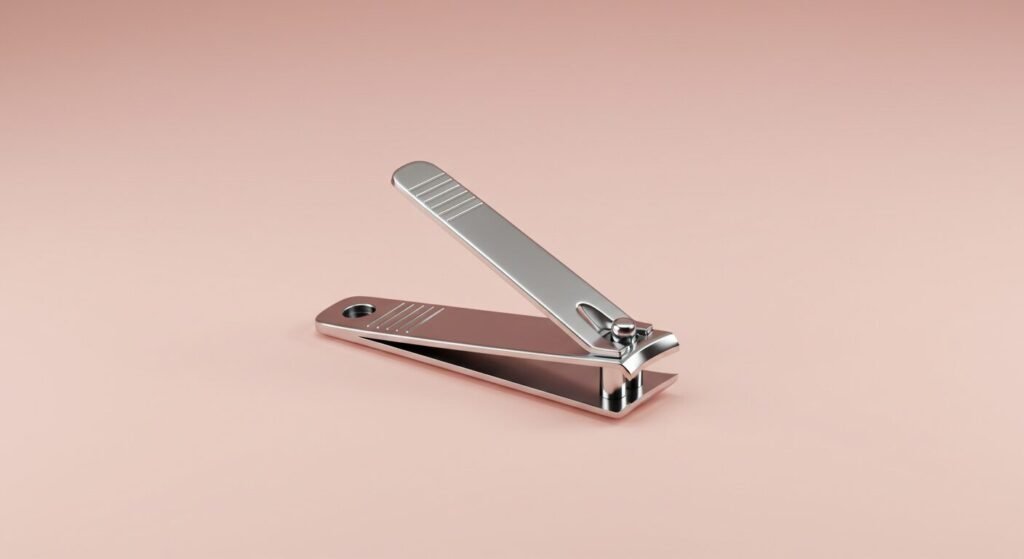
Professional grade nail clippers offer superior construction, precision engineering, and enhanced durability designed for frequent use in salon and medical settings. Salon nail clippers must meet strict hygiene standards while delivering consistent performance through hundreds of daily uses.
Medical grade clippers feature antimicrobial coatings, sterilization compatibility, and specialized designs for patients with compromised circulation, diabetes, or other conditions requiring careful nail care protocols.
Ergonomic features in professional clippers reduce hand strain during extended use while providing enhanced control and precision for detailed grooming work and therapeutic applications.
Consumer Nail Clippers
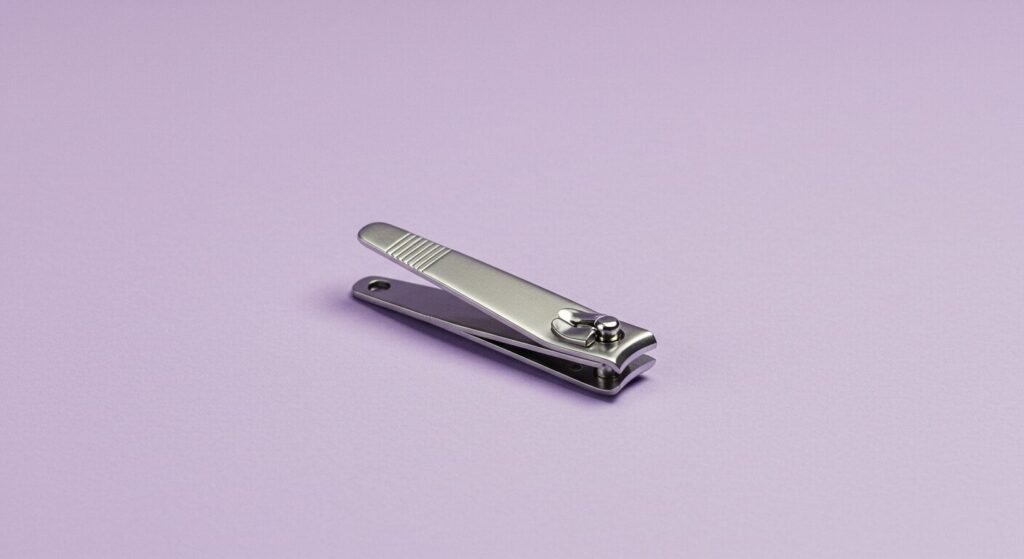
Home use nail clippers balance functionality with affordability, offering reliable performance for personal grooming without the premium features required for professional applications. Best nail clippers for home use combine quality construction with reasonable pricing.
Travel nail clippers provide compact, portable solutions for maintaining nail care routines while away from home, often featuring folding designs or protective cases that prevent damage and ensure hygiene.
Electric nail clippers offer automated cutting action that can be helpful for individuals with arthritis, limited mobility, or other conditions that make manual clippers difficult to operate effectively.
Specialized Clipper Designs
Heavy Duty Nail Clippers
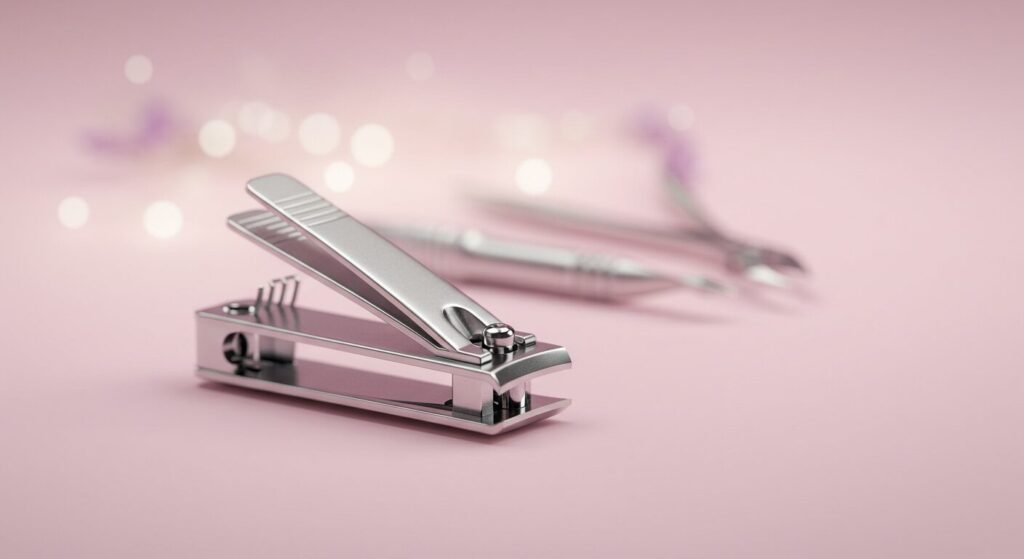
Heavy duty nail clippers feature reinforced construction, powerful leverage systems, and ultra-sharp blades designed to handle extremely thick, hard, or problematic nails that defeat standard clippers. Industrial strength design provides cutting power for challenging nail conditions.
Thick nail clippers accommodate nails affected by fungal infections, age-related thickening, genetic factors, or medical conditions that create difficult cutting scenarios requiring specialized tools and techniques.
Podiatrist recommended clippers often fall into the heavy-duty category, offering the precision and power necessary for professional foot care and therapeutic nail maintenance in medical settings.
Precision Nail Clippers
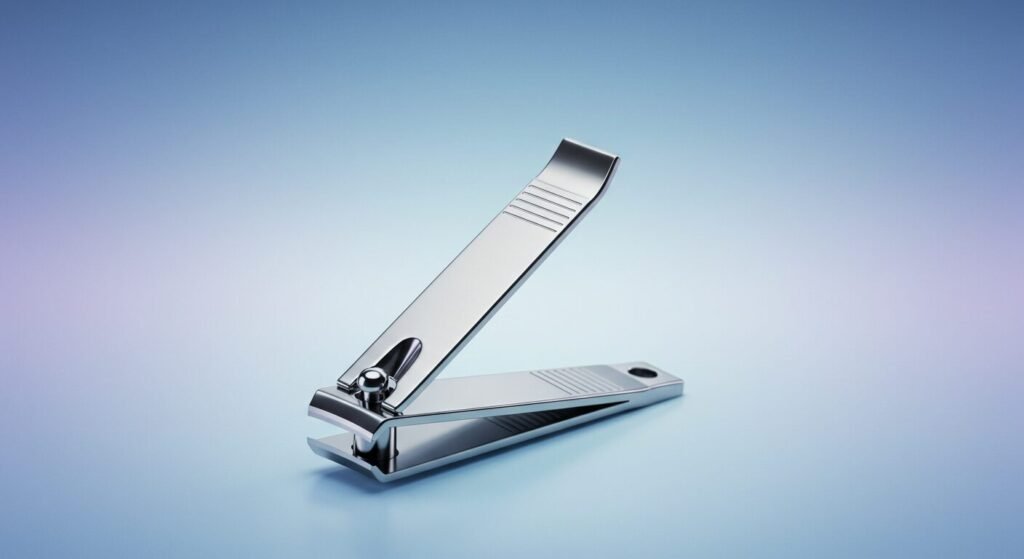
Precision nail clippers emphasize accuracy and control over raw cutting power, featuring fine-tuned mechanisms and sharp, carefully aligned blades for detailed nail shaping and maintenance work.
Small nail clippers serve specialized purposes including baby nail care, detailed cuticle work, or precise trimming in tight spaces where larger clippers would be unwieldy or inappropriate.
Curved vs straight blade clippers offer different cutting characteristics, with curved blades following natural nail contours while straight blades provide geometric precision for specific shaping requirements.
Material Quality and Construction
Stainless Steel Nail Clippers
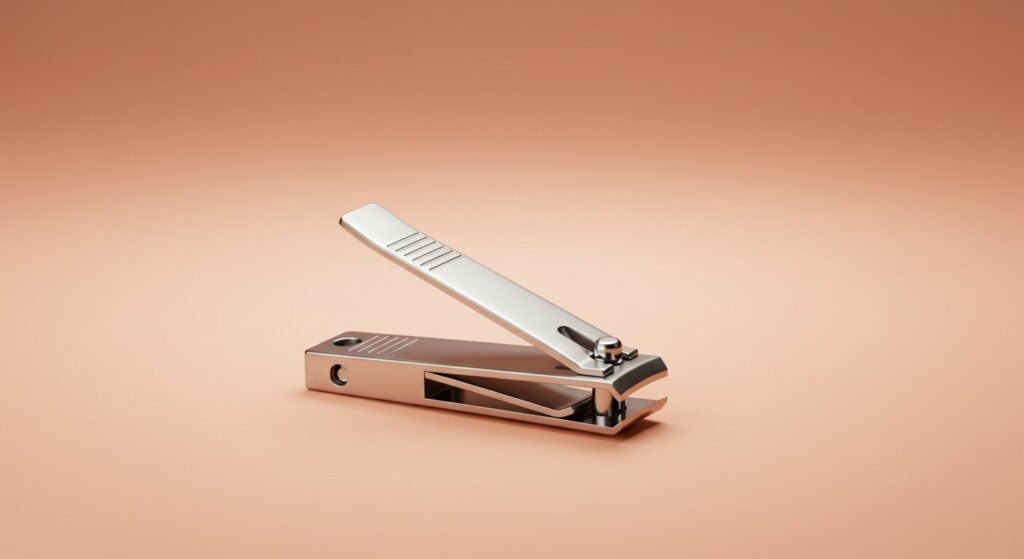
Stainless steel construction provides superior corrosion resistance, edge retention, and overall durability compared to carbon steel or coated alternatives. Surgical grade stainless steel offers the highest quality for professional and medical applications.
Blade hardness affects cutting performance and longevity, with properly hardened stainless steel maintaining sharp edges through thousands of cutting cycles while resisting chips, nicks, and other damage.
Finish quality influences both aesthetics and functionality, with polished surfaces reducing friction and preventing nail material buildup that can interfere with clean cutting action.
Handle and Grip Features
Ergonomic handles reduce hand fatigue and improve control during use, particularly important for individuals with arthritis, limited hand strength, or other mobility challenges that affect gripping ability.
Non-slip surfaces enhance safety and control, preventing dangerous slippage during use that could result in cuts or injuries. Textured grips provide secure handling even when hands are wet or products are present.
Size proportions affect leverage and comfort, with properly sized handles providing optimal mechanical advantage while fitting comfortably in various hand sizes and grip preferences.
Proper Usage Techniques and Safety
Correct Cutting Technique
Proper nail cutting technique involves clean, decisive cuts made perpendicular to nail growth direction to prevent splitting, tearing, or ingrown nails. Cutting angle affects final nail shape and health outcomes.
Sequential cutting for longer nails involves multiple small cuts rather than attempting to remove large sections in single cuts that can cause nail damage or clipper strain.
Pressure application should be firm but controlled, allowing clipper mechanisms to work efficiently without forcing cuts that can damage both nails and cutting tools.
Safety Considerations
Hygiene protocols for nail clippers include regular cleaning, periodic disinfection, and proper storage to prevent bacterial growth and cross-contamination between users or uses.
Sanitization methods vary based on clipper materials and construction, with some models suitable for autoclave sterilization while others require chemical disinfection protocols.
Injury prevention involves proper technique, appropriate tool selection, and awareness of limitations to avoid cuts, nicks, or other accidents during nail care routines.
Maintenance and Care
Cleaning and Sanitization
Regular cleaning removes nail debris, oils, and other materials that can accumulate in clipper mechanisms and interfere with proper operation. Deep cleaning involves disassembly when possible for thorough maintenance.
Disinfection protocols prevent bacterial and fungal growth while ensuring hygienic use, particularly important when clippers are shared or used in professional settings requiring strict sanitation standards.
Storage considerations protect clippers from moisture, impact damage, and contamination while maintaining easy access for regular use and maintenance routines.
Sharpening and Blade Maintenance
Blade sharpening extends clipper lifespan and maintains cutting performance, though not all clipper designs accommodate resharpening due to construction methods and blade configurations.
Professional sharpening services can restore cutting performance to many clipper types, though cost-effectiveness depends on original clipper quality and replacement costs.
Replacement indicators help determine when clippers should be retired, including dull blades, loose mechanisms, corrosion, or other damage that compromises performance or safety.
Special Needs and Medical Considerations
Diabetic Nail Care
Diabetic nail clippers require special attention to safety, precision, and hygiene due to increased infection risks and slower healing associated with diabetes-related circulation problems.
Medical grade tools for diabetic patients often feature enhanced safety mechanisms, antimicrobial coatings, and designs that minimize injury risk while providing precise cutting control.
Professional supervision may be recommended for diabetic individuals with compromised sensation, circulation, or healing ability that increases risks associated with nail care procedures.
Elderly and Mobility-Limited Users
Arthritis-friendly clippers feature ergonomic designs, easy-grip handles, and enhanced leverage systems that accommodate limited hand strength and mobility common in elderly users.
Adaptive tools may include extended handles, spring-assisted mechanisms, or electric operation for individuals unable to use standard manual clippers effectively or safely.
Caregiver considerations involve selecting tools that enable safe, effective nail care assistance while minimizing discomfort and injury risk for care recipients with various mobility limitations.
Pediatric and Baby Nail Care
Baby Nail Clippers
Baby nail clippers feature specialized designs with enhanced safety mechanisms, smaller cutting surfaces, and gentle operation suitable for delicate infant nails that require careful, precise handling.
Safety features in baby clippers include rounded tips, limited cutting depth, and ergonomic designs that prevent accidental cuts or injuries during care of squirming, uncooperative infants.
Age-appropriate sizing ensures clippers match developmental stages from newborn through toddler years, with different models designed for changing nail characteristics as children grow.
Child Nail Care
Children’s nail clippers bridge the gap between baby tools and adult implements, providing appropriate sizing and safety features for growing children learning personal grooming skills.
Teaching tools help children learn proper nail care techniques while maintaining safety through forgiving designs that minimize injury risk during skill development periods.
Supervision requirements vary by age and developmental stage, with gradual independence encouraged through appropriate tool selection and safety education.
Travel and Portable Options
Travel Nail Clippers
Compact travel clippers prioritize portability without sacrificing essential functionality, often featuring folding designs, protective cases, or multi-tool integration for convenient packing.
TSA compliance for travel clippers involves understanding current regulations regarding blade lengths, tool types, and carry-on restrictions that affect nail care tool selection for air travel.
Durability considerations for travel tools balance weight and size constraints with construction quality necessary to withstand the rigors of frequent packing and varied usage conditions.
Multi-Function Tools
Swiss army style nail tools integrate clippers with other grooming implements like files, scissors, and tweezers for comprehensive portable nail care solutions.
Grooming kits combine various nail care tools in organized cases or holders that keep tools protected, organized, and easily accessible during travel or daily use.
Keychain clippers provide emergency nail care capability in ultra-compact formats, though functionality is necessarily limited by size constraints and construction requirements.
Electric and Powered Options
Electric Nail Clippers
Battery powered clippers offer automated cutting action beneficial for users with limited hand strength, arthritis, or other conditions making manual operation difficult or painful.
Corded electric models provide consistent power for professional applications requiring extended use periods without battery limitations or charging interruptions.
Safety mechanisms in electric clippers prevent accidental activation and limit cutting depth to reduce injury risk while providing automated nail trimming functionality.
Nail Grinders and Files
Electric nail grinders offer alternative approaches to nail length reduction through grinding rather than cutting, potentially reducing splitting and providing smoother finishes.
Professional grade grinders feature variable speed control, multiple attachment options, and robust motors suitable for salon use and challenging nail conditions.
Home use considerations include noise levels, dust generation, and learning curves associated with electric grinding tools compared to traditional cutting methods.
Brand Comparisons and Recommendations
Premium Brands
Japanese nail clippers like Kai and Seki Edge represent premium quality with precision engineering, superior materials, and traditional craftsmanship that commands higher prices but delivers exceptional performance.
German engineering in brands like Zwilling and Dovo emphasizes robust construction, ergonomic design, and professional-grade performance for demanding applications.
American manufacturers offer various quality levels from basic consumer tools to professional instruments designed for medical and salon applications requiring consistent performance.
Budget-Friendly Options
Drugstore nail clippers provide basic functionality at affordable prices, though quality and longevity may be limited compared to premium alternatives.
Value considerations balance initial cost with expected lifespan, performance quality, and replacement frequency to determine true cost-effectiveness over time.
Quality indicators help identify better budget options through construction details, materials quality, and brand reputation within affordable price ranges.
Professional and Medical Applications
Salon Equipment
Professional salon clippers must meet hygiene standards, provide consistent performance through heavy use, and accommodate sterilization requirements necessary for client safety.
Autoclave compatibility allows complete sterilization between clients, essential for preventing cross-contamination in professional nail care environments.
Warranty and service considerations become important for professional tools that represent business investments requiring reliable performance and support.
Medical and Podiatry Use
Podiatrist tools require medical-grade construction, precise cutting control, and specialized designs for therapeutic nail care in patients with various medical conditions.
Hospital grade clippers meet strict medical standards for materials, construction, and sterilization compatibility necessary for healthcare environments.
Therapeutic applications may require specialized clipper designs for specific medical conditions, patient populations, or treatment protocols requiring precise, safe nail care.
Innovation and Technology
Modern Design Improvements
Ergonomic advances incorporate research into hand mechanics, grip patterns, and force application to create more comfortable, efficient clipper designs for extended use.
Material science developments introduce new alloys, coatings, and treatments that enhance performance, durability, and hygiene characteristics in modern nail clippers.
Manufacturing precision improvements enable tighter tolerances, better blade alignment, and more consistent quality control in clipper production processes.
Smart Features
LED lighting integration in some premium clippers improves visibility during detailed nail care work, particularly beneficial for elderly users or detailed grooming tasks.
Magnification features built into handles or stands assist users with vision limitations while providing enhanced precision for detailed nail care work.
Measurement guides help achieve consistent nail lengths and shapes through built-in references and cutting guides integrated into clipper designs.
Environmental and Sustainability Considerations
Eco-Friendly Options
Sustainable materials in clipper construction include recycled metals, biodegradable handles, and environmentally responsible packaging that reduces environmental impact.
Longevity focus emphasizes durable construction and repairability over disposable designs, reducing waste through extended product lifecycles and maintenance capabilities.
Packaging reduction initiatives minimize excess packaging materials while maintaining product protection and hygiene standards necessary for nail care tools.
Recycling and Disposal
End-of-life considerations for worn-out clippers include metal recycling options and proper disposal methods that prevent environmental contamination while recovering valuable materials.
Refurbishment programs offered by some manufacturers provide reconditioning services that extend clipper lifecycles while reducing waste and replacement costs.
Component separation facilitates recycling by allowing disassembly of different materials for appropriate processing and recovery in recycling systems.
Cost Analysis and Value Assessment
Price vs Performance
Investment considerations balance initial cost with expected performance, durability, and features to determine overall value for specific use cases and requirements.
Professional vs personal use affects value calculations, with professional applications justifying higher costs through increased usage frequency and performance demands.
Replacement frequency impacts total cost of ownership, with higher-quality clippers potentially providing better long-term value through extended service life.
Budget Planning
Entry-level options provide basic functionality for budget-conscious consumers while identifying upgrade paths for improved performance and features.
Mid-range selections offer balanced combinations of quality, features, and affordability suitable for most home users seeking reliable nail care tools.
Premium investments justify higher costs through superior materials, construction quality, and specialized features for demanding users or professional applications.
Common Problems and Solutions
Troubleshooting Issues
Dull blade problems manifest through difficult cutting, nail crushing, or ragged cuts that can be addressed through sharpening, adjustment, or replacement.
Mechanism problems including loose pivots, weak springs, or misaligned components may require professional repair or indicate replacement necessity.
Hygiene issues result from inadequate cleaning and can lead to bacterial growth, odors, or corrosion that compromises both performance and safety.
Preventive Maintenance
Regular inspection identifies developing problems before they compromise performance or safety, enabling proactive maintenance and timely replacements.
Proper storage prevents damage, contamination, and corrosion while maintaining clipper condition between uses and extending overall service life.
Usage guidelines help prevent abuse, overloading, or inappropriate applications that can damage clippers and create safety hazards during nail care routines.
Future Trends and Developments
Technology Integration
Smart connectivity potential includes usage tracking, maintenance reminders, and technique feedback through integrated sensors and mobile app connectivity.
Advanced materials research continues developing new alloys, coatings, and treatments that enhance performance, hygiene, and durability characteristics.
Precision manufacturing advances enable even tighter tolerances and more consistent quality while potentially reducing costs through improved efficiency.
Design Evolution
Customization options may expand to include personalized ergonomics, adjustable mechanisms, and modular designs accommodating individual preferences and needs.
Specialized applications drive development of task-specific clippers for unique requirements in medical, professional, or specialty grooming applications.
User interface improvements focus on making clippers more accessible, comfortable, and effective for users with various abilities and limitations.
Selection Guidelines and Recommendations
Choosing the Right Clippers
Usage assessment considers frequency, nail types, user abilities, and special requirements to guide appropriate clipper selection from available options.
Feature prioritization helps balance desired capabilities with budget constraints and practical considerations for specific use cases and environments.
Quality indicators include construction materials, manufacturing precision, brand reputation, and warranty coverage that suggest long-term value and performance.
Maintenance Planning
Care requirements vary among clipper types and should factor into selection decisions based on user willingness and ability to perform necessary maintenance.
Replacement scheduling helps maintain optimal performance through timely clipper retirement and replacement before degradation compromises effectiveness or safety.
Backup considerations suggest maintaining secondary clippers for emergencies, travel, or situations where primary tools are unavailable or undergoing maintenance.
Conclusion
Choosing the right nail clippers is an investment in your nail health, grooming efficiency, and personal comfort that pays dividends through years of reliable service. Whether you need basic fingernail clippers for daily maintenance or heavy-duty toenail clippers for challenging conditions, understanding the options available ensures you’ll make informed decisions.
Quality nail clippers combine sharp, durable blades with ergonomic designs that make nail care comfortable and precise. Professional-grade tools offer enhanced performance and longevity for demanding applications, while specialized designs address unique needs from baby nail care to medical applications.
Proper maintenance and usage techniques maximize clipper performance while ensuring safety and hygiene throughout their service life. Regular cleaning, appropriate storage, and timely replacement prevent problems while maintaining optimal cutting performance and user safety.
The investment in quality nail clippers reflects the importance of proper nail care in overall health and appearance. Well-maintained nails contribute to professional presentation, personal confidence, and health maintenance that extends far beyond simple grooming considerations.
Remember that nail clippers are precision tools deserving care and respect. With proper selection, maintenance, and usage, quality clippers will serve you reliably for years while contributing to healthy, attractive nails that enhance your overall appearance and well-being.
Frequently Asked Questions
What type of nail clippers work best for thick toenails?
Heavy duty nail clippers with reinforced construction and powerful leverage systems work best for thick toenails. Look for models specifically designed for toenails with larger cutting surfaces and robust mechanisms that can handle increased resistance. Stainless steel construction ensures durability, while ergonomic handles provide comfortable grip during use. For extremely thick nails caused by fungal infections or medical conditions, consider professional podiatrist-grade clippers or seek professional nail care.
How often should nail clippers be cleaned and sanitized?
Nail clippers should be cleaned after each use to remove nail debris and oils, with thorough sanitization weekly or after any contact with infected nails. Use rubbing alcohol, hydrogen peroxide, or antibacterial solutions for disinfection. Professional settings require sanitization between each client, often using autoclave sterilization or hospital-grade disinfectants. Proper cleaning prevents bacterial growth and extends clipper life while maintaining hygiene standards.
Can nail clippers be sharpened, or should they be replaced?
Quality nail clippers can often be professionally sharpened to restore cutting performance, though cost-effectiveness depends on original clipper value. Premium stainless steel clippers with proper construction are good candidates for sharpening, while cheap or damaged clippers are usually better replaced. Signs requiring replacement include loose mechanisms, corrosion, chipped blades, or safety concerns that sharpening cannot address.
What features should I look for in nail clippers for elderly users?
Elderly users benefit from ergonomic handles with non-slip grips, enhanced leverage for reduced hand strain, and larger size for easier handling. Spring-loaded mechanisms reduce effort required, while curved blades follow natural nail contours for safer cutting. Some may prefer electric clippers to minimize manual dexterity requirements. Safety features like rounded tips and limited cutting depth help prevent accidental injuries.
Are expensive nail clippers worth the investment?
High-quality nail clippers often justify their cost through superior materials, precision construction, and extended longevity. Premium clippers typically feature sharper blades, better ergonomics, and more durable mechanisms that provide years of reliable service. For frequent use or professional applications, expensive clippers offer better value through performance and durability. Casual users may find mid-range options provide adequate quality without premium pricing.
READ ALSO: Oval Shaped Nails: 2025 Complete Guide to Timeless Elegance and Versatile Beauty
Was this helpful?
Your feedback helps us create better content
Thank you for your feedback!
Your input helps us improve our content.

